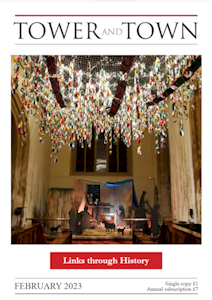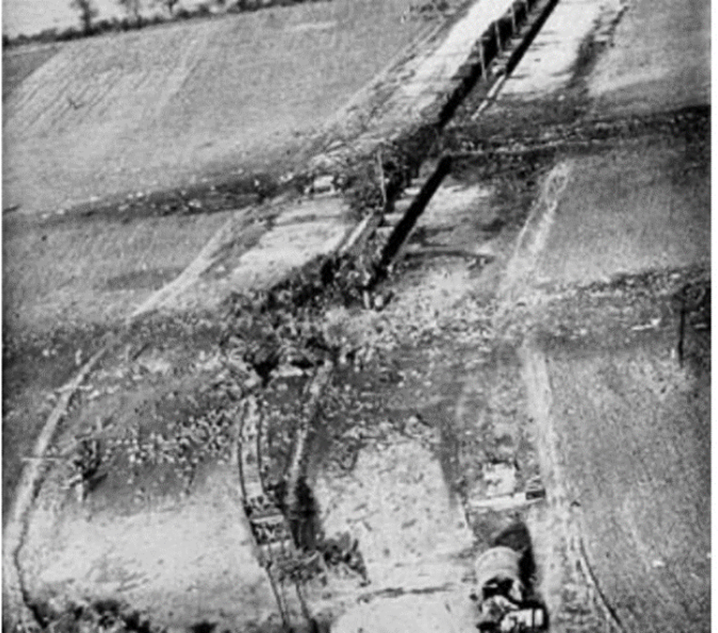

Tower and Town, February 2023 (view the full edition) (view the full edition)Ammunition Explosions at Savernake in 1946On St George's Day in 2023 (23 April), it is planned to unveil a memorial at High Walls in New Road, Marlborough. This memorial will commemorate those brave men who prevented what was potentially the biggest disaster to befall the town since the great fire of April 1653. The story begins in the early months of World War 2, when Savernake Forest was selected to become an ammunition storage depot in July 1940. It was chosen because it had good rail and road links and ammunition could be dispersed over a wide area under cover of broadleaf trees, which would hide it from the air. Thousands of tons of ordnance were stored there, including over three thousand tons of chemical ordnance, like mustard gas. The first Americans arrived at Savernake on 23 July 1942 and their numbers grew to over 1,200 in the build up to D-Day. They were billeted in camps around the area, including Tottenham House, Postern Hill and Cadley. As a portent of things to come there was a serious explosion, caused by a fire, near Warren Farm on 7 July 1945, which badly damaged the farm buildings and St Katharine's Church. Damage ranged as far as Crofton, Great Bedwyn, Bedwyn Common, Chisbury, St Katharine's and isolated settlements around the forest. One American serviceman was killed. When the war ended, Savernake began receiving large quantities of unused American and German ordnance for preparation and onward shipment to ports for disposal at sea. Part of the preparation was to drill holes in the wooden ammunition boxes, so that they would sink when dumped in the sea. On Wednesday 2 January 1946 in North Savernake Sidings near Cadley, trains had arrived, laden with munitions, from Newport, and a train was being prepared for dispatch to Silloth in Cumbria for munitions to be dumped at sea. A fire started, it is thought to have been caused by binding brakes on a wagon, and several explosions occurred. The men on site decoupled the burning wagons and moved the main train out of the way and then there was a huge explosion. Local historian David Chandler, then aged eight, still remembers that day and seeing a mushroom cloud above the forest. Present that day were eighteen servicemen, five men from the National Fire Service and three men from the Great Western Railway; eight of the servicemen lost their lives. Two of the servicemen that died were buried with military honours in Marlborough Town Cemetery: Corporal Thomas S Pickersgill and Private Francis W E Whieldon. They are remembered every Armistice Day with poppies on their graves. Those that survived received one of the largest collection of gallantry awards ever given in peacetime, 2 x George Cross, 4 x George Medal, 4 x MBE, 6 x BEM and 2 x KCBC. Had the burning wagons not been decoupled the whole train would have blown up, over a thousand tons of explosives, which would have devastated the town of Marlborough and caused many casualties. We owe a lot to those men. Reference: 'Savernake at War' by Roger Day 
Mervyn Hall |